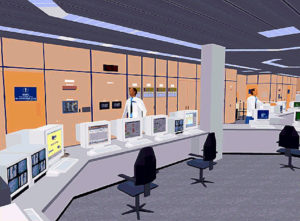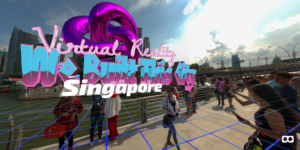WebVR: Taking The Path Of Least Resistance To Mainstream VR

 What is WebVR?
What is WebVR?
WebVR is a JavaScript API for rendering 3D graphics within a browser, meaning that, if you punched in a link in the browser for a 3D website, you would find yourself in a 3D space (whether on your computer browser or within a VR headset). In laymen’s terms, WebVR is a low-barrier entry point to develop VR for the web without having to be familiar with WebGL, which can be frustrating for beginners to grasp.
In its ease of use and lack of friction for consumers, WebVR presents a glimmer of hope for the mainstream adoption of virtual reality (VR) and augmented reality (AR).
WebVR—what we can call “Casual VR”—paves a way for consumers without state-of-the-art hardware to experience VR, through the web on multiple platforms. In fact, this could prove to be the best way to democratize VR in the long run.
Technology Agnostic
Looking Forward
Mozilla took the lead in pioneering WebVR, launching its A-Frame VR content authoring tool in 2015, along with its MozVR resource.
Besides A-Frame, other WebVR frameworks include React VR, Argon.js, PlayCanvas, JanusVR and Primrose. Google, Oculus and Samsung Internet also published their WebVR and open-source developer resources.
A WebVR Community Group to decide on WebVR standards was formed by Mozilla, Google, Samsung, Facebook, Intel, Microsoft and other major tech players, with Apple recently joining the community in July this year.
“By the end of the year all key global mobile phone brands would have announced their support for WebVR, and will have devices to support it out by Q4 2017 or Q1 2018,” said Christopher Gomez, XR industry advisor and angel investor. “And with ARKit and ARCore in the mix, we will have a vibrant mix of platforms and ideas. Immersive technologies are here to stay—it will be a reality for everybody. The ‘Metaverse’—it’s real.”
“Augmented City” #ARCity
As WebVR content creators and developers start to converge worldwide, in Singapore, the community assembled at an ‘Augmented City’ experiential xLab in July. This xLab, organized by the XR Alliance in partnership with Mozilla and the VR AR Women in Asia Society with the VR AR Association, is the first of its kind globally with the kickoff of this first xLab installment supported by Intel.
Disclaimer: I’m a founding member of the XR Alliance and founder of VR AR Women in Asia Society.
See the full story here: https://vrscout.com/news/webvr-path-of-least-resistance-to-mainstream-vr/
Pages
- About Philip Lelyveld
- Mark and Addie Lelyveld Biographies
- Presentations and articles
- Tufts Alumni Bio